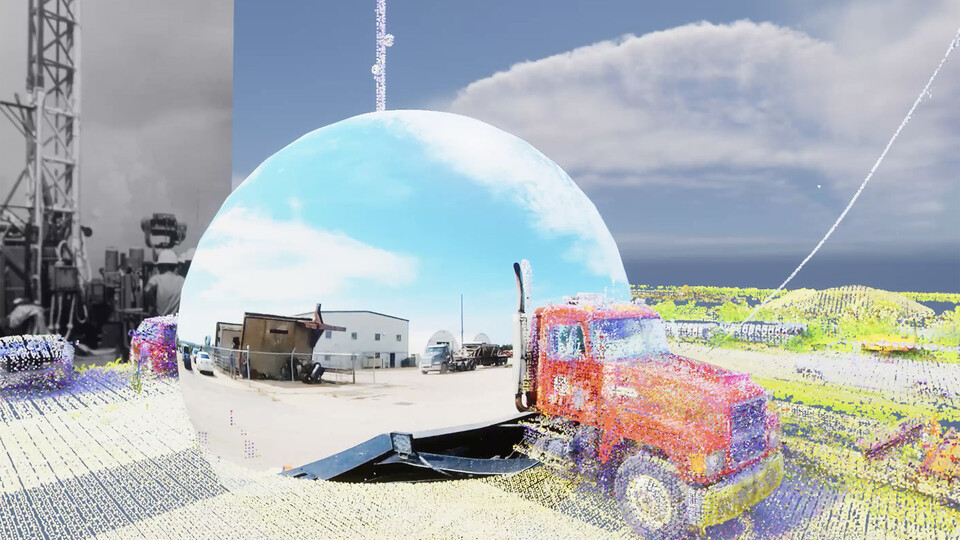
Thanks to a Grand Challenges grant, an interdisciplinary team of student and faculty researchers at the University of Nebraska–Lincoln is re-imagining a decommissioned Atlas-F missile silo near Seward, Nebraska, into the Ice Coring and Education Silo Center. Upon its completion, the facility would be the first facility of its kind in the world.
The Speculative Devices Lab in the Johnny Carson Center for Emerging Media Arts, led by Ash Eliza Smith, assistant professor of emerging media arts, has released a video (https://go.unl.edu/icesilo) highlighting a plan to design a testing facility for ice core drilling equipment in the abandoned missile silo, one of 12 built in Nebraska in the 1960s. The proposed facility also will include educational outreach and exhibition space.
The video (https://go.unl.edu/icesilo) was edited by undergraduate emerging media arts student Hank Ball with additional camera and media capture and game engine support by Sam Lawton, Alex Gee and Wyatt Debben. The video features content created by Brian M. Kelly’s collaborative design studio in the College of Architecture, LiDAR scans and drone photogrammetry by Rogue Visual Design in Kansas City using Leica LiDAR and historical analysis animation by landscape architecture undergraduate Jace Armstrong.
“Our lab focuses on expanded realities, thinking about spatial storytelling and geolocative media,” Smith said. “Our team comprises land-use planners, placemakers, architects, engineers, community members, scholars and artist-creators. One of our primary goals is to think about how to go beyond a digital twin of a site to create interactive stories inside a game engine. The extraordinary history of the missile silo, combined with its repurposed objectives, will also provide novel opportunities for engagement, education and tourism.”
The video helps convey the concept of the Ice Coring and Education Silo to a wider audience, combining documentary with architecture through Real-Time 3D game engine.
The project is bringing together faculty and students from four colleges, including the Hixson-Lied College of Fine and Performing Arts, the College of Architecture, the College of Arts and Sciences and the College of Engineering.
“The Speculative Devices Lab is an interdisciplinary team using technology and collaborative storytelling methods across architecture and emerging media arts as a way to bring in the past and help shape the future. We work between the physical into the digital and vice-versa,” said Lawton, a UCARE student researcher in the lab.
Images taken with a 360-video camera depict undergraduate students in the Speculative Devices Lab setting up various shots underground in the abandoned missile silo. Image courtesy of Speculative Devices Lab.
The team is using NERFs (Neural Radiance Fields), LiDAR scans and photogrammetry via drone capture, as well as real-time 3D technologies and 2D video and images, to create a collage of different storytelling methods.
“The video highlights the creative ways the historical legacy of the Cold War and of ice drilling science and engineering can be presented,” Smith said. “The lab brings these different capture techniques into a game engine.”
Students in the College of Architecture’s Collaborate studio, for fourth-year students, explored concepts for the center as part of their project.
“With Rogue Visual Design, we used the LiDAR to then understand what the silo looks like,” Kelly said. “My students would use that, first of all, to visualize the project and then to be able to verify whether or not their designs fit within the existing space.”
This semester, UNL students in a second interdisciplinary design studio in the College of Architecture are exploring ideas for the design of the ICE Silo with a focus on the exhibition and educational aspects of the program.
The Center for Science, Mathematics and Computer Education is providing event support to the outreach and leadership portions of the project.
More on the project:
https://go.unl.edu/j0c8